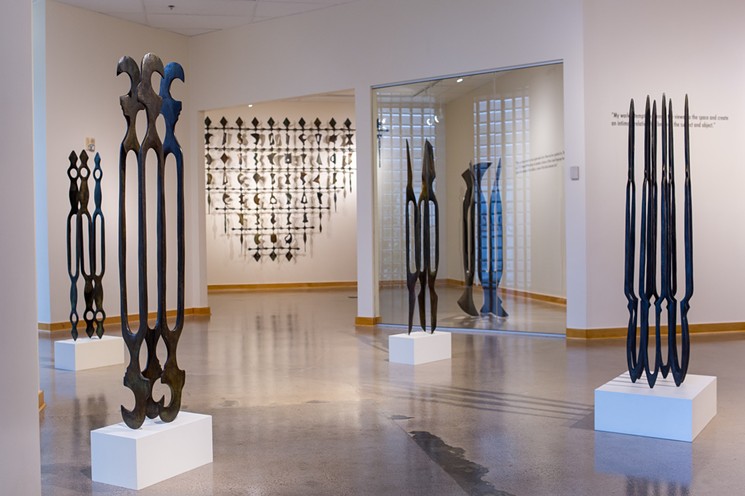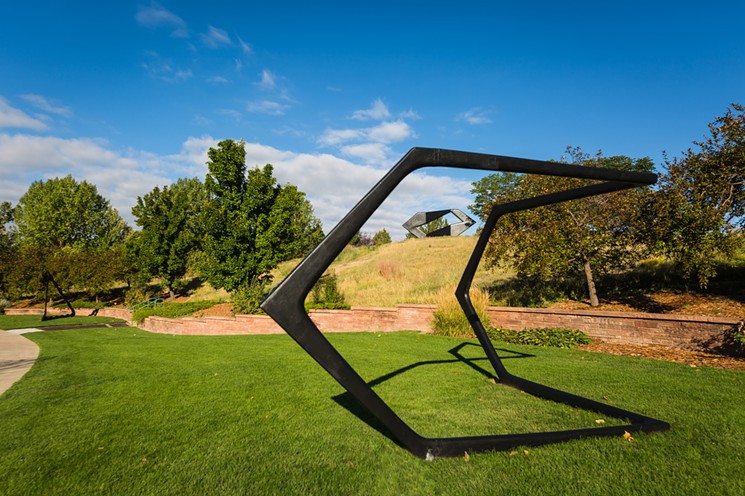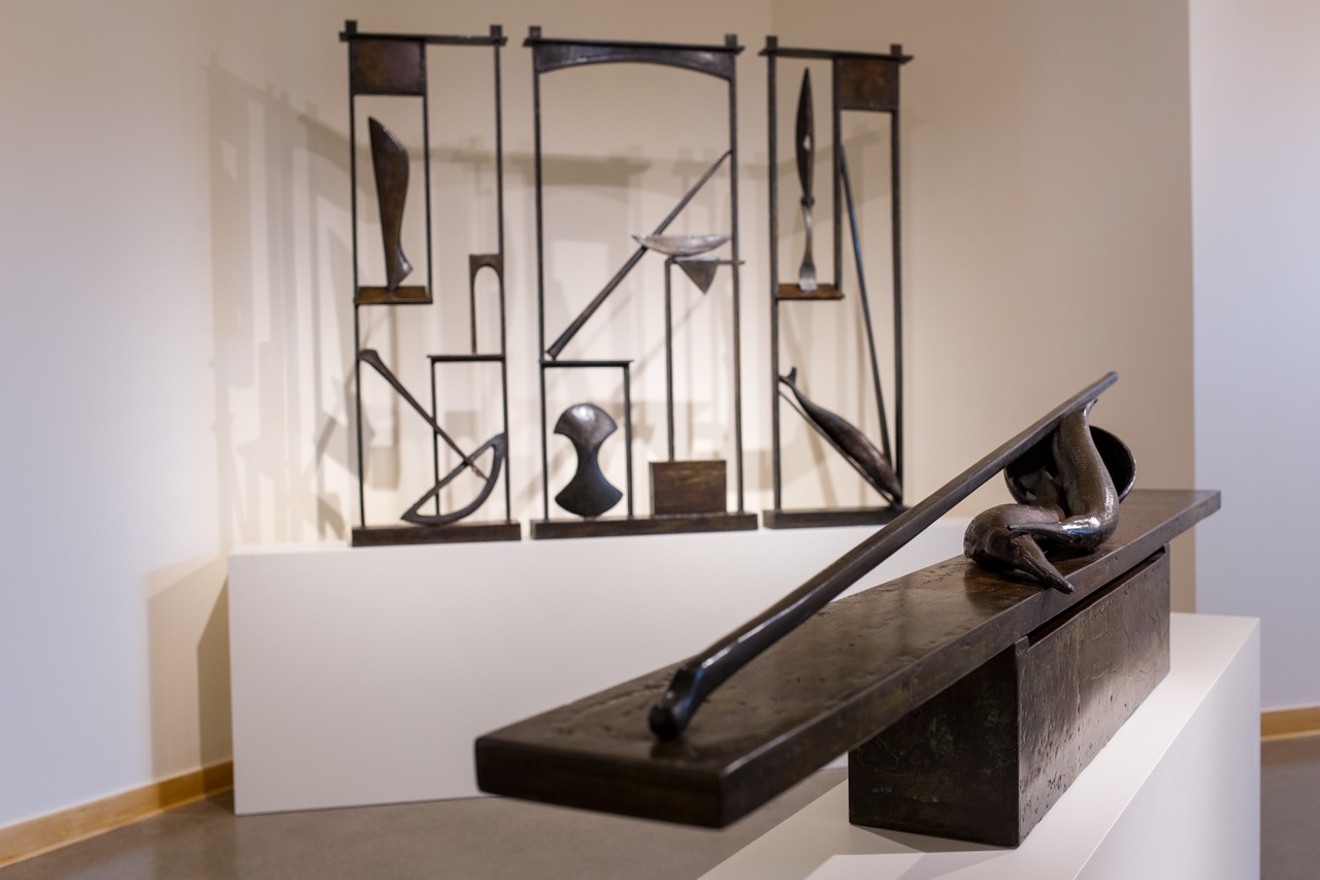Inside is a full-blown survey of the work of Chicago sculptor Neil Goodman that's basically, though not strictly, chronological. The pieces from the 1980s are vertical structures made of cast and welded bronze with horizontal shelves or levels on which vaguely representational forms have been placed. The stunning “Cage” has a decidedly Giacometti-ish vibe — not related to Giacometti's famous attenuated figures, but to his lesser-known, early surrealist work. In these Goodman sculptures, within an overall geometry of bars, conventionalized objects sit on diagonal shelves, including a bust resembling Queen Nefertiti; the angled shelves suggest a compressed perspective. “Triptych” is much flatter, essentially a three-part screen mostly made up of voids, with the sculpture serving as something of a three-dimensional drawing in space.
Beginning in the 1990s and into the 2000s, Goodman increasingly dispensed with the constraints of the frame-like structures. He received major commissions for wall sculptures, such as the one at the Leigh Block Museum of Art at Northwestern University, in which the broadly representational elements that had formerly been perched on shelves or bars were freed, and instead scattered across the wall on which they were directly mounted. At MOA, “Subjects and Objects” represents this kind of work. Cast elements, most of which suggest simplified drafting tools, along with a hyperrealist rendition of a sea creature and some other things, have been hung on the wall in an asymmetrical balance; the piece has a lighter feeling than earlier works, with most of the overall composition nothing more than bare wall. Since Goodman likes to work in bronze, which is super-expensive, these aggregated pieces that incorporated the space between elements allowed him to work monumentally without it becoming cost-prohibitive.

Installation view of Neil Goodman’s “Columns” (foreground) and “Biography” (background), bronze.
Heather Longway
Goodman has also continued doing freestanding pieces, including the “Shadows and Echoes” series of silhouette shapes, which are either linear or planar; the most extensive collection of these is in a sculpture garden specially created to display them at the University of Indiana Northwest. There are many freestanding sculptures included in the gallery portion of the MOA show — don’t miss the ones in the back gallery, whose stands mirror the shapes of the sculptures — along with a group of the monumental ones in Westlands Park.

Neil Goodman’s sculptures at Westlands Park (left to right): “Wind,” “Reach” and “Rudder,” fiberglass.
Heather Longway
This impressive exhibit reveals that while Goodman has relentlessly experimented with his formal vocabulary, going from formalism to minimalism over the course of his long career, he's remained true to his original vision.
Close Proximately runs through November 17 at the MOA, located at 1000 Englewood Parkway, Englewood. The outdoor portion of the show continues through August 2019 in Westlands Park, northwest of the intersection of Orchard Road and South Quebec Street in Greenwood Village. Call 303-806-0444 or go to moaonline.org for hours and additional information.











